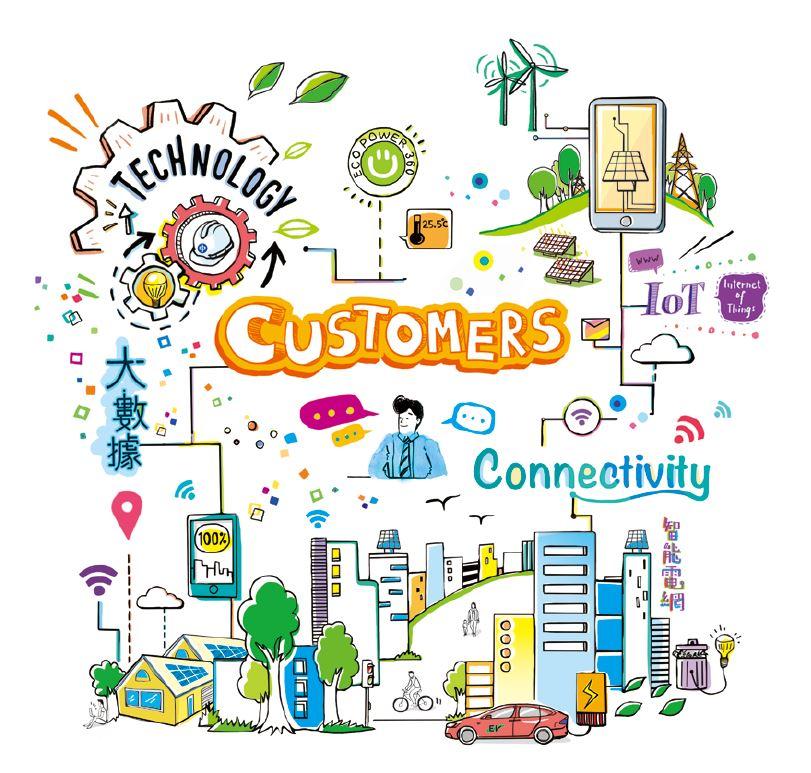CLP Shares How to Develop Customer-Centric Utilities for the Future

The electricity industry is undergoing a major transition, as changes are reshaping the traditional utility model. Climate change, for one, has prompted the gradual decarbonisation of generation facilities around the world. Technology advancements are driving down the costs of wind turbines, solar panels, energy storage devices and distributed energy, making renewables an increasingly viable part of people's daily lives.
In this time of disruption, new levels of interaction are emerging between utilities and consumers, and among consumers themselves. Empowered by abundant and more available information, consumers are increasingly demanding more custom solutions and more choice. At the same time in an effort to modernize the utility offering, businesses have shifted from a one-way promotion of products and services to a two-way engagement model with customers at the heart of their operations.
Increasingly, utilities must learn to stay ahead of the latest innovation and technology trends to meet the evolving demands of customers. This not only empowers consumers, but can also help utility companies to play a role in helping governments and consumers to adopt technological advancements in a way that balances regulation, economics, environment and social concerns.
In the following areas we can see clearly how technology and innovation are being used to develop customer-centric utilities for the future.
1. Integrated Renewables
Today, renewable generation like wind and solar has become more affordable and accessible. With new technologies, innovative business models and supportive regulatory structures, the integration of such renewables can be achieved through the engagement of customers through demand response, energy storage devices, microgrids and dynamic pricing. The integration of such new generation aims to address challenges like supply reliability and quality (when the air is still and the sun doesn't shine).
2. Distributed Energy Resources
In the past, distributed generation has been limited by the lack of affordable local resources and specific needs, such as the demand for backup generators. However, as a result of new technologies, distributed renewables such as rooftop solar panels and small wind turbines have become more accessible and affordable, and will continue to evolve. In addition, the arrival of different energy storage means, including chemical batteries, flywheels, thermal storage systems and even electric vehicles, now enables both customers and utilities to store limited electricity easily at different locations.
3. Electric Vehicles
Globally, electric vehicles (EVs) have gained significant traction and investment in recent years. Across the globe, manufacturers continue to deliver new state-of-the-art EV models, while governments offer incentives for consumer adoption. EV use in urban areas has risen sharply as cities plan and deploy more and more charging stations to improve convenience and accessibility.
4. Big Data
Big data has become a new source of value creation in almost all industries. The development and integration of the Internet of Things, smart appliances, smart meters and Advanced Meter Infrastructures (AMI) with devices and sensors in houses, buildings and other environments, has enabled much more dynamic and intelligent consumption of electricity.
While the benefits of more automated and smarter applications are being realized, utilities must ensure at the same time that the privacy of customers and the security of their data are respected and safeguarded.
These four trends are only a few examples of the major shift we are seeing in the development of customer-centric utilities for the future. Utility companies should be playing a leading role in pushing these developments forwards, supporting and staying ahead of the latest technology and innovation trends. Most importantly, to ensure these trends are aligned with actual customer needs will require a constant dialogue with customers, governments and other stakeholders to understand changing needs. Utility companies can only remain relevant and play a central role in developing, providing and storing the energy if they commit to being active advocates for customer-centric utilities of the future.
To keep up with industry trends, please subscribe to receive CLP’s New Horizons articles.

